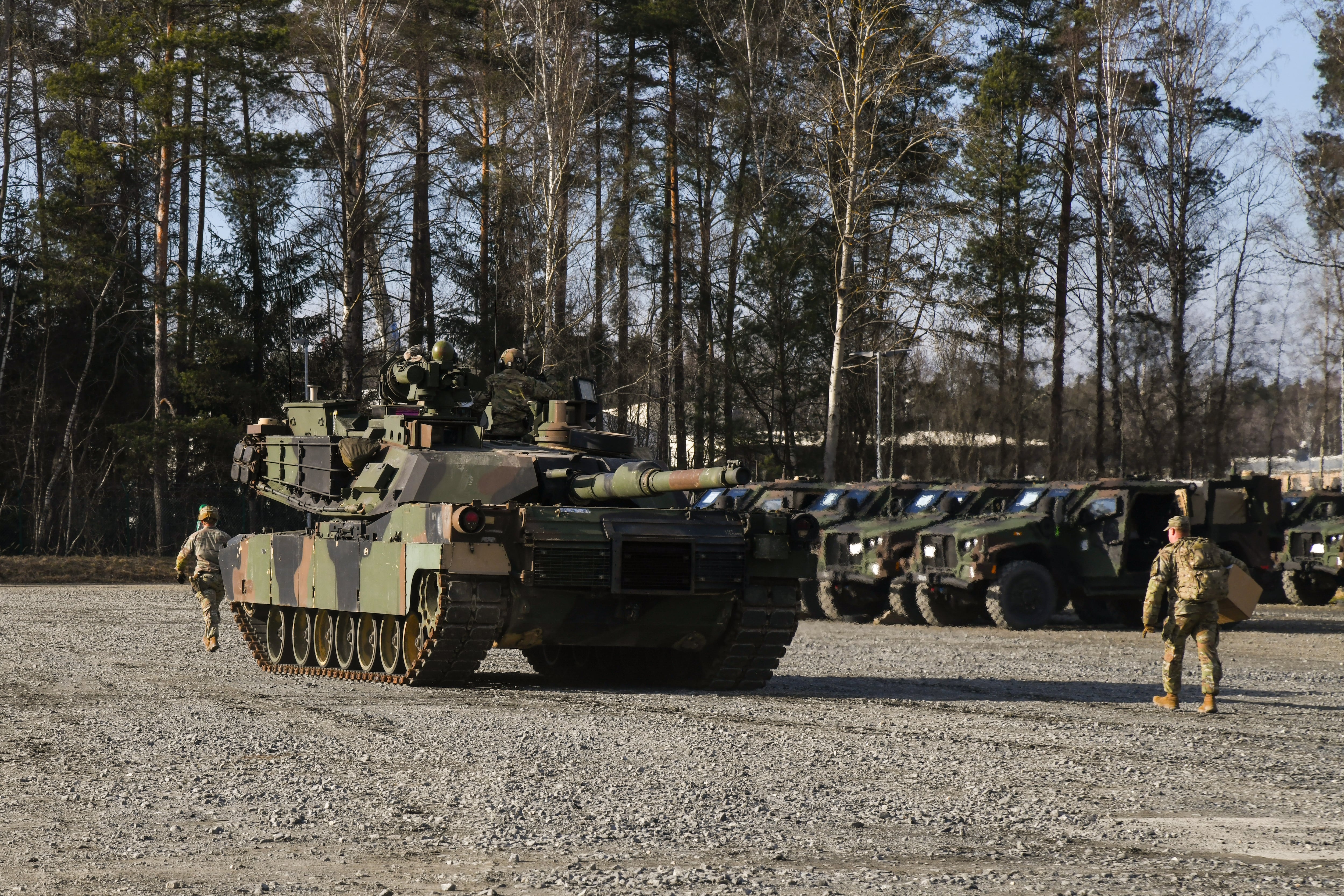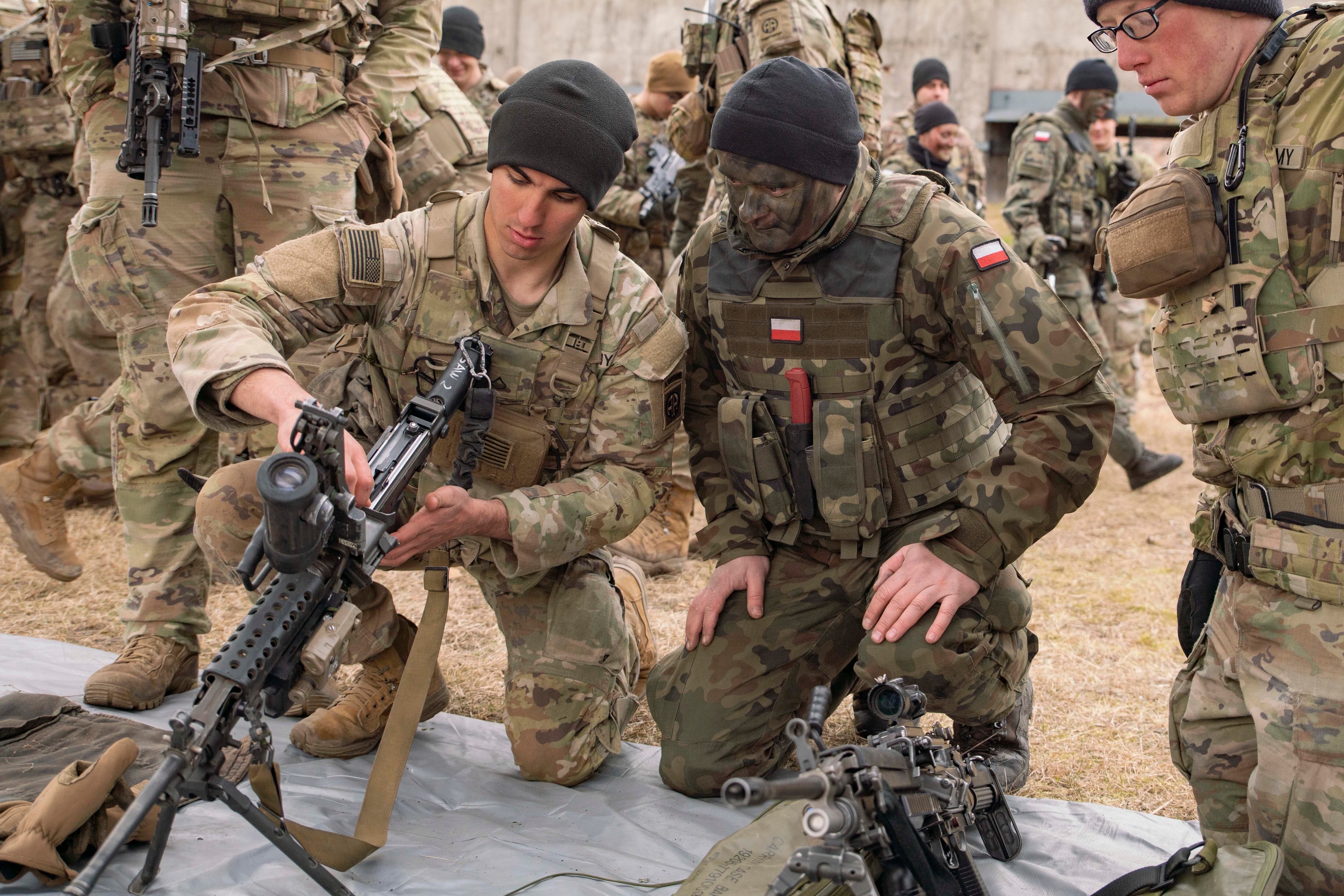Roughly 20,000 U.S. troops were mobilized throughout central and eastern Europe in the early months of this year, first in anticipation of a Russian invasion of Ukraine and then in response to it.
Most of those troops are still posted in partner nations, training with local troops and otherwise assuring NATO countries that the U.S. will respond if Russia takes the fight beyond Ukraine.
“So right now, the intent is to keep troop levels at the same level as they’ve been,” a senior military official told Military Times on Monday during a background briefing. “We have no announcements to make in terms of any changes to that in the near term.”
A small number of those originally mobilized have since redeployed, according to the latest numbers.
The remaining members of the 300-soldier XVIII Airborne Corps headquarters deployment returned from Germany over the weekend, the unit announced Monday.
Eighty-five of them spent a full nine months staffing Task Force Dragon in Wiesbaden, according to U.S. European Command’s most recent count.
Elsewhere, deployments of Army AH-64 Apaches, Marine Corps F/A-18 Hornets, Air Force F-35 Lightning IIs and Navy EA-18G Growlers have all returned home.
But the vast majority of the troops are still in Europe, some of them rotating home with new units replacing them.
Here is an updated list of activated troops, as of Monday:
- Approximately 125 soldiers from the V Corps Main Command Post in Poland.
- Approximately 1,000 soldiers from the 1st Infantry Division headquarters, 1st Infantry Division Artillery and enablers in Poland and Latvia.
- Approximately 3,200 soldiers from 2nd Brigade Combat Team, 101st Airborne Division in Poland, as well as the Baltic and Black Sea regions.
- Approximately 3,200 soldiers from 3rd Armored Brigade Combat Team, 1st Cavalry Division in Poland.
- Elements of 5th Battalion, 7th Air Defense Artillery Regiment in Poland and Slovakia.
- Battle groups from U.S. Army Europe and Africa are deployed to Slovakia, Romania, Hungry and Bulgaria in support of NATO.
- 12 F-22 Raptors and associated personnel from the 90th Fighter Squadron at Lask Air Base, Poland.
- The Bush carrier strike group is deployed to the Mediterranean Sea.
The Pentagon has said that units mobilized this year have been, generally, doing joint training with allies, but details on the day-to-day of deployments have been scarce, as the Pentagon put a blanket ban on embedding media with units.
RELATED

There have been troops helping to hand off weapons and equipment shipments to Ukrainian forces and training Ukrainians outside of Ukraine on new weapons, as well as standing by to support American citizens who fled Ukraine through Poland in the early days of the invasion.
Though the Pentagon hasn’t detailed what the future of force posture in Europe is, other than that the numbers of currently activated troops are expected to remain stable, senior military officials have signaled more than once that a larger presence in Europe is in order.
“It’s got to change,” retired Air Force Gen. Tod Wolters, then head of EUCOM, told lawmakers in March. “And certainly, this is an opportunity, as a result of this senseless act on behalf of Russia, to reexamine the permanent military architecture that exists not only in Eastern Europe, but in our air policing activity, in aviation and in our standing naval maritime groups.”
That may not look like it did in the past.
Officials have suggested pushing more rotational deployments to the continent, rather than maintaining large bases with schools and amenities for accompanying families, as was done through much of the 20th century.
“My advice would be to create permanent bases, but don’t permanently station,” Army Gen. Mark Milley, chairman of the Joint Chiefs of Staff, told the House Armed Services Committee in April. “So you get the effect of permanence by rotational forces cycling through permanent bases.”
Meghann Myers is the Pentagon bureau chief at Military Times. She covers operations, policy, personnel, leadership and other issues affecting service members.




